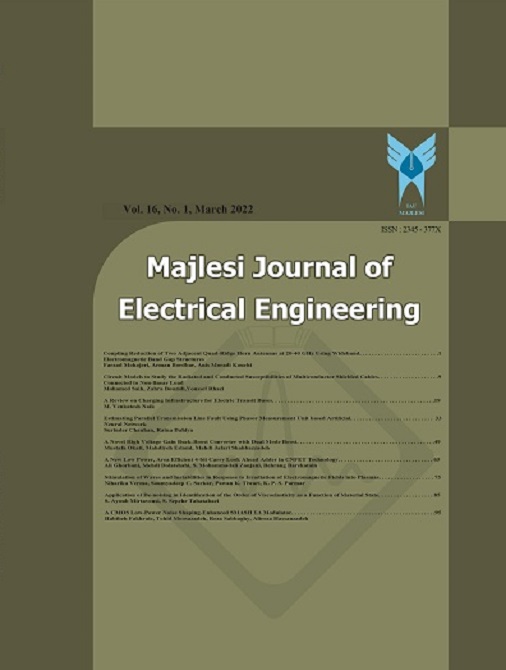[1] A. Ebadi Torkayesh, M. Deveci, S. Karagoz, and J. Antucheviciene, "A state-of-the-art survey of evaluation based on distance from average solution (EDAS): Developments and applications,"
Expert Systems with Applications, vol. 221, 2023, Art. no. 119724.
https://doi.org/10.1016/j.eswa.2023.119724
[2] P. T. Phan and P. T. Nguyen, "Evaluation based on the distance from the average solution approach: A derivative model for evaluating and selecting a construction manager,"
Technologies, vol. 10, no. 5, Art. no. 107, 2022.
https://doi.org/10.3390/technologies10050107
[3] M. Keshavarz-Ghorabaee, E. Zavadskas, L. Olfat, and Z. Turskis, "Multi-criteria inventory classification using a new method of evaluation based on distance from average solution (EDAS),"
Informatica, vol. 26, pp. 435–451, 2015.
https://doi.org/10.15388/Informatica.2015.57
[4] M. Abdel-Basset, A. Gamal, M. Elhoseny, and M. A. Hossain, Eds., "Assessing the sustainable aspects of location selection for offshore wind power plant," in
Multi-Criteria Decision-Making for Renewable Energy, Elsevier, 2024, pp. 87–109.
https://doi.org/10.1016/b978-0-443-13378-7.00005-4
[6] T. G. Tan, P. Szalachowski, and J. Zhou, "Challenges of post-quantum digital signing in real-world applications: A survey,"
Cryptology ePrint Archive, Paper 2019/1374, 2019.
https://eprint.iacr.org/2019/1374
[7] M. Raavi et al., "Security comparisons and performance analyses of post-quantum signature algorithms," in
Applied Cryptography and Network Security: 19th International Conference, ACNS 2021, Kamakura, Japan, June 21–24, 2021, Proceedings, Part II, pp. 424–447, 2021.
https://doi.org/10.1007/978-3-030-78375-4_17
[8] M. Vidaković and K. Miličević, "Performance and applicability of post-quantum digital signature algorithms in resource-constrained environments,"
Algorithms, vol. 16, no. 11, Art. no. 518, 2023.
https://doi.org/10.3390/a16110518
[10] D. J. Bernstein et al., "The SPHINCSv+ signature framework," in
Proceedings of the 2019 ACM SIGSAC Conference on Computer and Communications Security, pp. 2129–2146, 2019.
https://doi.org/10.1145/3319535.3363229
[12] H. Seo, M. Anastasova, A. Jalali, and R. Azarderakhsh, "Supersingular isogeny key encapsulation (SIKE) round 2 on ARM Cortex-M4,"
IEEE Transactions on Computers, vol. 70, no. 10, pp. 1705–1718, 2020.
https://doi.org/10.1109/TC.2020.3023045
[14] L. Ducas et al., "Crystals-dilithium: A lattice-based digital signature scheme,"
IACR Transactions on Cryptographic Hardware and Embedded Systems, vol. 2018, no. 3, pp. 238–268, 2018.
https://doi.org/10.46586/tches.v2018.i1.238-268
[15] J. Howe and B. Westerbaan, "Benchmarking and analysing the NIST PQC finalist lattice-based signature schemes on the ARM Cortex M7,"
IACR Cryptology ePrint Archive, Paper 405, 2022.
https://doi.org/10.1007/978-3-031-37679-5_19
[17] T. B. Fouotsa and C. Petit, "SHealS and HealS: Isogeny-based PKEs from a key validation method for SIDH," in
Advances in Cryptology–ASIACRYPT 2021: 27th International Conference on the Theory and Application of Cryptology and Information Security, Singapore, Dec. 6–10, 2021, Proc., Part IV, pp. 279–307.
https://doi.org/10.1007/978-3-030-92068-5_10
[18] S. Chakraborty, P. Chatterjee, and P. P. Das, "Evaluation based on distance from average solution (EDAS) method," in
Multi-Criteria Decision-Making Methods in Manufacturing Environments, Apple Academic Press, 2024, pp. 183–189.
https://doi.org/10.1201/9781003377030-16
[19] S. Zhang et al., "EDAS method for multiple criteria group decision making under picture 2-tuple linguistic environment,"
Mathematics, vol. 7, no. 3, Art. no. 243, 2019.
https://doi.org/10.3390/math7030243
[20] F. Borges, P. R. Reis, and D. Pereira, "A comparison of security and its performance for key agreements in post-quantum cryptography,"
IEEE Access, vol. 8, pp. 142413–142422, 2020.
https://doi.org/10.1109/access.2020.3013250
[22] S. Sharma et al., "Post-quantum cryptography: A solution to the challenges of classical encryption algorithms," in
Modern Electronics Devices and Communication Systems: Select Proceedings of MEDCOM 2021, 2023.
https://doi.org/10.1007/978-981-19-6383-4_3
[23] K. Basu et al., "NIST post-quantum cryptography—a hardware evaluation study,"
Cryptology ePrint Archive, Paper 2019.
https://ia.cr/2019/047
[26] A. E. Torkayesh et al., "A state-of-the-art survey of evaluation based on distance from average solution (EDAS): Developments and applications,"
Expert Systems with Applications, vol. 221, Art. no. 119724, 2023.
https://doi.org/10.1016/j.eswa.2023.119724
[27] T.-Y. Chen, "A circular intuitionistic fuzzy evaluation method based on distances from the average solution,"
Engineering Applications of Artificial Intelligence, vol. 117, Art. no. 105499, 2023.
https://doi.org/10.1016/j.engappai.2022.105499
[28] B. Güneri and M. Deveci, "Evaluation of supplier selection in the defense industry using q-rung orthopair fuzzy set based EDAS approach,"
Expert Systems with Applications, vol. 222, Art. no. 119846, 2023.
https://doi.org/10.1016/j.eswa.2023.119846

